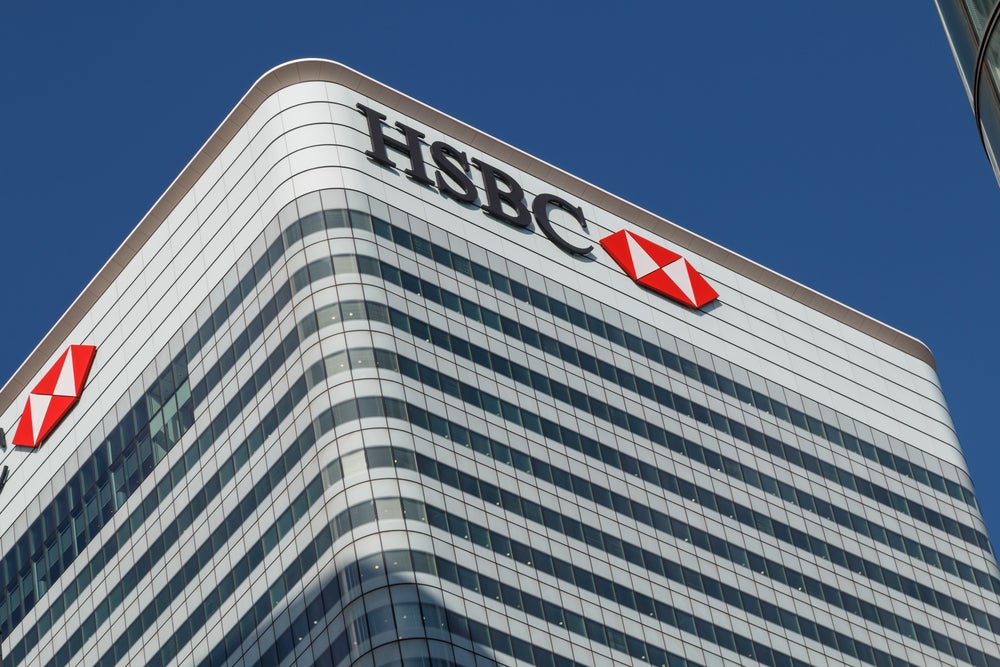Fifteen years after becoming
the first European bank to offer internet services to customers,
Finland’s largest financial services institution is preparing to
develop a cutting-edge mobile banking channel. Maryrose Fison
interviews OP-Pohjola’s chief strategy officer Tom
Dahlström.
 Its name may not
Its name may not
be well-known outside of Finland, but its influence on the retail
banking sector cannot be overestimated. OP-Pohjola Group is
Finland’s largest bank; a cooperative which combines banking, asset
management and non-life insurance and in the past two decades it
has become a beacon of light in innovative banking.
With roots that trace back more
than one hundred years, the Nordic bank now boasts threem retail
customers representing more than 60% of the country’s population.
In 1996, it gained international prominence, when it became the
first bank within Europe to offer its customers internet services,
a facility which has since become virtually indispensable.
Now, two months after mobile phone
provider Nokia publicly announced changes to its 2011 strategy, in
particular disclosing an interest to develop a new tablet offering,
it has committed to a multi-million pound project aimed at creating
a brand new mobile banking channel.
It may sound like an ambitious task
but the bank’s track record of capitalising on gaps in the market
and growth over the past five years has put it in a comfortable
position to invest in such a hi-tech project.
How well do you really know your competitors?
Access the most comprehensive Company Profiles on the market, powered by GlobalData. Save hours of research. Gain competitive edge.

Thank you!
Your download email will arrive shortly
Not ready to buy yet? Download a free sample
We are confident about the unique quality of our Company Profiles. However, we want you to make the most beneficial decision for your business, so we offer a free sample that you can download by submitting the below form
By GlobalDataIn April, OP-Pohjola announced its
first quarter results for 2011, revealing its best first-quarter
performance for three years. Consolidated earnings before tax
improved to €94m ($132m), up from €59m a year earlier. Banking
earnings before tax doubled to €53m from €26m and asset management
increased its earnings by 11% to €6.2m, up from €5.6m.
Its annual results for 2010, were
also strong although there were areas for improvement notably
regaining market share in deposits. Assets under management rose by
6% to €35bn. Earnings before tax rose 24% to €575m from €464m and
net commission and fees rose by 14%.
Tom Dahlström, chief strategy
officer and executive board member at OP-Pohjola Group, told
RBI the decision to launch a mobile e-business banking
channel aimed to “tap into a window of opportunity” and could
create around 100 jobs, with potentially more recruits brought on
board later.
Though unable to give precise
financial targets due to the project being in the planning phase,
he was willing to give an indication of the size of the
investment.
“It is probably fair to say it is
in excess of €5m as a rough estimate on an annual basis,” Dahlström
said.
Underpinning the project has been a
growing awareness of the impact mobile phones and tablet devices
have on consumer behaviour. Whereas in the past, Dahlström said the
preferred medium for undertaking banking activities at OP-Pohjola
was in person at a branch; nowadays, customers were showing more
interest in banking remotely and in transit.
“A lot of things have been
happening with mobile devices in the last couple of years and there
are increased opportunities for innovative financial services,” he
explained.
“It is becoming an increasingly
important part of the overall customer experience. People like to
do things using their mobile phones and they rate you very much on
how cutting edge, and how well you develop your mobile
services.
“Our competitors have been very
active as well in developing services or special apps for iPhones
and the iPad, etc. So we see there is an interest in customer
behaviour and technological development is facilitating that.”
Under the proposed plan, the bank
will set up a development unit in Oulu, a coastal town in central
Finland, where initially 50-60 people will focus on developing
eBusiness and mobile applications. The recruitment process is
already underway and, depending on the speed of the set up
progresses, Dahlström believes parts of the unit could be running
as early as the end of this year.
A separate ICT unit is also
expected and fully functional operations are anticipated during or
after 2012.
Developing ‘hybrid
products’
 Another strand
Another strand
in the bank’s retail strategy is the ongoing development of its
‘hybrid products’. Because the bank comprises three business lines
– banking, non-life insurance and asset management – it has
capitalised on combining features from different product lines.
“Hybrid products are being offered
more and more because the number of players that provide both
banking and insurance products is increasing in the Finnish
market,” Dahlström said.
“Hybrid products are a way of
creating synergies between these businesses and differentiating
yourself from pure banks or insurance companies and their
offerings.
“One example of a hybrid product is
Pohjola’s Rahoituskasko, which combines finance leasing or part
payment/hire purchase and car insurance for physical damage and
liability.
“Our card products have also been
combined with various insurance features, for instance our OP-Visa
and OP-Visa Gold and OP-Visa Platinum cards contain Ostourva, [a
type of purchase insurance] where a product purchased with credit
is insured against theft or damage for a limited period of
time.”
Continuing the development of these
hybrid products is “one definite line of development” for the bank,
Dahlström added, saying there were “all kinds of interesting things
in the pipeline”.
The bank is also continuing to
launch new bond products. At the end of June, it will issue a new
index-linked bond, called the Pohjola Tutkimuksen Taehet, targeted
at retail investors and carrying a maximum nominal value of € 40m
for a five-year maturity term.
Boosting
deposits
 While much of the
While much of the
bank’s performance was strong in 2010, market share for deposits
reduced slightly from 33.2% on 31 December 2009 to 32.5% on 31
December 2010. Money deposited in household current accounts was
flat, standing at €12bn in 2009 and 2010.
Underpinning this, was a
“challenging pricing environment”, Dahlström said, explaining price
competition for deposits had intensified to such an extent during
the first half of the year that competitor banks began offering
interest rates which exceeded the Euro Inter Bank Offered Rate
(Euribor) rates on fixed deposits.
“The interest rates offered
especially on term deposits of 12 months and above have at times
even exceeded Euribor rates of equal maturity,” Dahlström said.
“This makes little sense unless a
bank is either seeking to significantly alter its funding structure
or is counting on attracting new customers with  these offers and
these offers and
being able to get revenues from subsequently selling other products
to these customers.”
Rather than using a single-pronged
attempt to boost market share through exclusively focussing on
raising retail customer numbers, Dahlström indicated that the bank
is using a multi-dimensional approach.
“Improving our performance will
require both active product development, increased sales activity
and marketing, more responsive pricing -being more sensitive to
day-to-day pricing in the market- and probably also more aggressive
pricing overall,” he said.
“We are not looking to increase the
number of retail customers so much, we are more focused on
increasing the share-of-wallet. We haven’t set an absolute target
for deposits, but our target is to grow our deposits faster than
the domestic market, in other words., to increase our market share
by the end of the year.”
Solvency II
 With part of its
With part of its
business focussing on insurance, OP-Pohjola has a vested interest
in ensuring it is up-to-date with the evolving Solvency II
proposals. It successfully increased its Tier 1 capital ratio from
12.6% to 12.8% as of 31 December 2010 and Dahlström is confident
the bank will be where it needs to be come implementation of the
new regime in 2013.
“There is still work to be done but
I don’t see that as a major issue,” he said. “It is more of an
issue that there is still some uncertainty as to how the final
regulatory regime will look. Uncertainty is always a bad thing. If
we had detailed knowledge of everything that would be expected of
us we would have an easier operation.”
And while many European retail
banks have negative public sentiment to contend with following the
financial crisis, the cooperative structure of OP-Pohjola, combined
with Finland’s strong position economically means the bank is well
placed to continue its growth.
The World Economic Forum’s
Global Competitiveness Report 2010-2011 (GRC)
ranked Finland as the seventh most competitive country in the
world, putting it well ahead of the UK, France, Austria, Canada and
Australia.
Perception of Finnish banks has
been further bolstered by strong positive perceptions of financial
institutions. The country was ranked third in the GRC for
the ethical behaviour of its firms and was found to have among the
most transparent institutions in the world.
One quarter of OP-Pohjola’s
customers are “owner-members”, meaning they are eligible for the
bank’s annual bonus which was last year worth €150m, and with
positive sentiment on its side Dahlström said the public’s trust in
Finland’s banks remains strong.
“In the UK there used to be a very negative sentiment towards
high street banks and there is also a long tradition of shopping
around and using independent financial advisers,” he said. ” That
has not been so much of an issue over here. The larger banks have a
very strong position in the market.”







